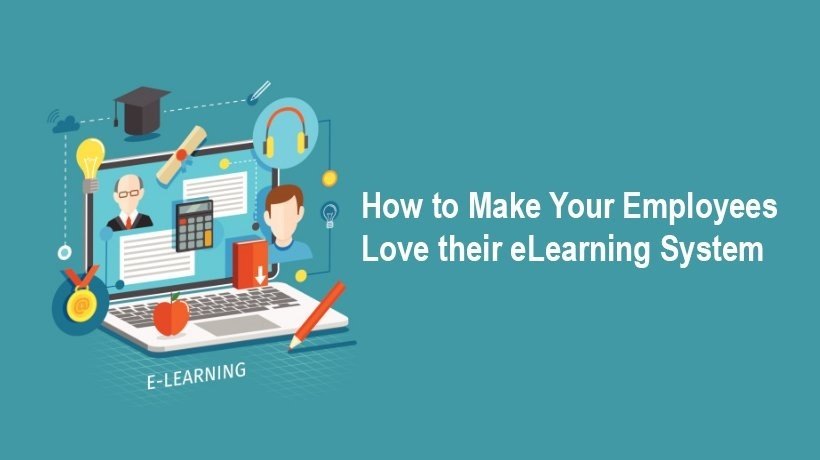Sell The Benefits And Get Buy-In For An LMS
Investing in a Learning Management System (LMS) is becoming increasingly important for businesses of all sizes. An LMS can provide many benefits to an organization, from improved employee performance and increased efficiency to cost savings and better compliance. Even so, convincing your leadership of these benefits to your organization can be challenging. In this article, we'll look at some of the main benefits of an LMS and how it can help an organization streamline its training processes, engage its employees, and improve its overall performance. We'll also list some pointers for getting the buy-in you need from leadership.
Benefits Of A Learning Management System
1. Cost Savings
An LMS can save your company money by reducing costs in various areas, including training and development, employee onboarding, employee engagement, and compliance. By utilizing an LMS, businesses can leverage automation, streamline processes, and reduce the time and resources spent on training and development. An LMS can also help reduce employee onboarding costs, as new hires can quickly access comprehensive training materials from different departments. Furthermore, an LMS can help to improve employee engagement and productivity, as employees have easy access to the information they need to perform their job more efficiently. Finally, an LMS enables businesses to ensure compliance with regulations and standards, helping to reduce the cost of potential fines or other liabilities.
2. Improved Employee Performance
An LMS can improve employee performance by providing a central place to access all the training materials they need to do their jobs effectively. Additionally, an LMS can provide employees with access to easily searchable resources, such as video tutorials, online courses, webinars, and microlearning, that can help them further develop their skills. An LMS tracks employee progress through assessments and monitors engagement, providing custom reporting. This reporting can help identify areas of improvement and ensure that employees are making progress toward their goals. You can also use it to give feedback to employees, allowing them to see areas where they need to improve and where they are making progress.
By accessing this information, leadership can guide and support employees as they work toward their goals. Additionally, an LMS can provide additional insight into the progress of teams and departments, helping to ensure that the organization is meeting its goals.
3. Scalability
An LMS streamlines and manages the training process. Streamlining ensures that the training process is as efficient as possible by reducing the manual work involved in managing the training program. It can address many training programs, users, and course material, making it easier to scale up or down as needed. Additionally, an LMS provides access to resources and support from anywhere, allowing learners to access learning materials and activities in many languages without being tied to a physical location.
4. Engaging Learning Experience
By leveraging the power of an LMS, organizations can create a highly engaging learning experience and foster a culture of continuous learning. An LMS can provide engaging learning experiences in several ways.
- Gamification
Gamification is the process of adding game-like elements to learning content [1]. Gamification can make learning more fun and engaging and adds a bit of competition to the learning process. - Personalized learning paths
Personalized learning paths offer learners tailored content and activities designed to meet individual needs and skill gaps. An LMS can provide a more specific and engaging learning experience by customizing content and activities. - Interactive content
Interactive content such as quizzes, polls, assessments, activities, and simulations can engage learners and help them retain information. - Social learning
Social learning allows learners to collaborate and discuss their learning material. This feature can help them better understand and apply the content. - Adaptive learning
Adaptive learning can tailor content and activities to the individual learner's needs, interests, and goals [2]. This feature helps ensure that learners receive the most relevant and engaging content.
5. Compliance And Regulatory Requirements
An LMS creates, manages, delivers, and tracks training, and Learning and Development activities. It can help ensure that employees are trained and certified in critical areas, such as safety and security, operations, and customer service. These LMS features help organizations meet compliance and regulatory requirements and ensure that the organization meets its legal obligations. By using an LMS, organizations can track employee completions and certifications to ensure that their personnel is up to date on all training requirements. This can reduce the risk of legal action and fines and help protect the organization from potential liability.
Investing in an LMS can improve employee performance, increase efficiency, and save money. It can also ensure that employees are trained and certified in the necessary areas to meet compliance and regulatory requirements. By investing in an LMS, an organization can create an engaging and interactive learning experience and streamline its training processes.
Tips For Getting Buy-In For An LMS
Getting buy-in from all stakeholders is essential to ensure the project's success. Here are some tips on how to get buy-in for an LMS.
1. Your HR System Is Not An LMS
One of the first things you should point out is the difference between a Learning Management System and the HRIS, ERP, CRM, or other systems you presently use to onboard or train employees, customers, and partners. The main difference between an LMS and these other systems is that an LMS is specifically designed to manage the delivery and tracking of learning activities. While an LMS may contain some HR-related features—such as tracking training hours and certifications—its primary focus is to create an effective learning environment for end users. Similarly, many HR platforms include add-on training capabilities or other LMS-type features. But those rarely include the robust learning-tech features offered by a proper LMS.
2. Explain The Benefits
Before you can get buy-in for an LMS, you need to explain the benefits to the organization. Emphasize cost savings, improved employee engagement, and increased productivity from an LMS, as pointed out above. Showing how the LMS will help employees and the organization demonstrates the value of the investment.
3. Show Them The Money
Research current ROI figures for LMS usage based on your company size and type of implementation. ROI figures for Learning Management Systems vary depending on the size of the organization, the type of system implemented, and the duration of the implementation [3].
4. Get Key Stakeholders On Board
One of the most critical steps in getting buy-in for an LMS is to get key stakeholders on board. These include executives, department managers, and IT professionals. Explain the system's value to each stakeholder and show how it can help them achieve their goals. Break down the problems faced by each person you'll have to convince, such as any skills gap concerns that may be holding back your organization's growth, or lack of visibility into professional development-related issues. Furthermore, consider what your CEO or CLO's biggest headache is, and what was announced as the biggest priority during your company's annual meeting. By directly addressing these issues, you will make your business case much stronger.
5. Demonstrate The System
Once you have the stakeholders' support, it's time to demonstrate the LMS you have selected. You can do this by running a demo or by having a user test it. This approach will help stakeholders see how the system works and understand its features. To ensure stakeholders get the most out of the demonstration, prepare a presentation that outlines the system's capabilities and features. Include a final page that outlines your case for an LMS to drive your ideas home.
6. Showcase Success Stories
Finally, showcasing success stories can be a great way to get buy-in for an LMS. Showing how other organizations have been successful with the system will help demonstrate its value and help convince stakeholders to invest in it.
Getting buy-in for your LMS can be difficult, but you can do it. By taking the time to explain the benefits, get key stakeholders on board, demonstrate the system, and showcase success stories, you can help ensure the project's success. Good luck!
References:
[2] Top 3 benefits of adaptive learning in corporate training
[3] How to measure training ROI: A practical guide










